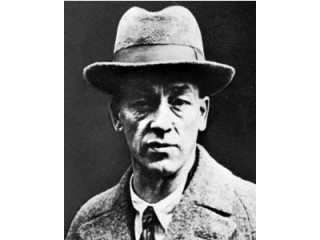
James Stephens (author) biography
Date of birth : 1882-02-02
Date of death : 1950-12-26
Birthplace : Dublin, Ireland
Nationality : irish
Category : Famous Figures
Last modified : 2011-07-19
Credited as : Author and novelist, The Crock of Gold,
James Stephens was born on Feb. 2, 1882 , to a poor family living in a slum area of Dublin. He was largely self-educated and was working in a solicitor's office when the poet George Russell (known as AE) discovered him. In physical appearance he resembled a leprechaun, less than 5 feet in height, with a droll face and dark complexion, a prototype of the comic Irishman. Married and with two children, he divided his time between Dublin and Paris until the outbreak of World War II. He made his debut as a successful broadcaster for the BBC in 1928 with a personal reminiscence of John Millington Synge. Although he disassociated himself from Irish neutrality during the 1940s, declaring himself "an Irishman who wished to elect himself an Englishman for the duration," he was honored for his service to the cause of Irish independence and was active in the Sinn Fein movement from its beginnings. Until his death on Dec. 26, 1950, he was assistant curator of the Dublin National Gallery.
Stephens's proficiency in the Gaelic language and his extensive collection of Irish folklore and legends made him a master of the Irish oral tradition. His fables and tales are a blend of philosophy and nonsense, aimed at creating for Ireland "a new mythology to take the place of the threadbare mythology of Greece and Rome." His masterpiece, The Crock of Gold (1912), a modern fable, employs leprechauns and spirits in a half-concealed burlesque of Irish philosophy that derides the imprisonment of the human intellect by doctors, lawyers, priests, professors, and merchants; at the same time, it presents a humorous commentary on the Irish battle of the sexes. This work won the Polignac Prize for fiction in 1912. The Charwoman's Daughter (1912) enjoyed great success in America under the title Mary, Mary.
Stephens's graphic eyewitness account of the events of Easter Week, The Insurrection in Dublin (1916), was reprinted in 1965. His third novel, Deirdre (1923), won the Tailteann Gold Medal for fiction in 1923. Thirteen volumes of lyric poems have established his reputation as a poet; among the best of these are his first, Insurrections (1909), Songs from the Clay (1915), Strict Joy (1931), and his last, Kings and the Moon (1938). Etched in Moonlight (1928), a collection of short stories, exhibits the same genius for language and love of Irish lore as was found in his popular collection Irish Fairy Tales (1920). Stephens's linguistic wizardry and lyric gifts led James Joyce to remark that if he died before completing Finnegans Wake, James Stephens was the only man who could finish it.
















